- You are here:
- Home »
- Desk Tips »
- How to Organize Papers Without a Filing Cabinet: Simple Tips and Tricks
How to Organize Papers Without a Filing Cabinet: Simple Tips and Tricks
As an Amazon Associate I earn from qualifying purchases.
Are you tired of the endless stacks of paper cluttering your desk and home? Are you looking for a way to organize your papers without the need for a bulky and expensive filing cabinet? Look no further! In this article, we will provide you with tips and tricks on how to create an effective paper organization system that will keep your papers tidy and easily accessible.
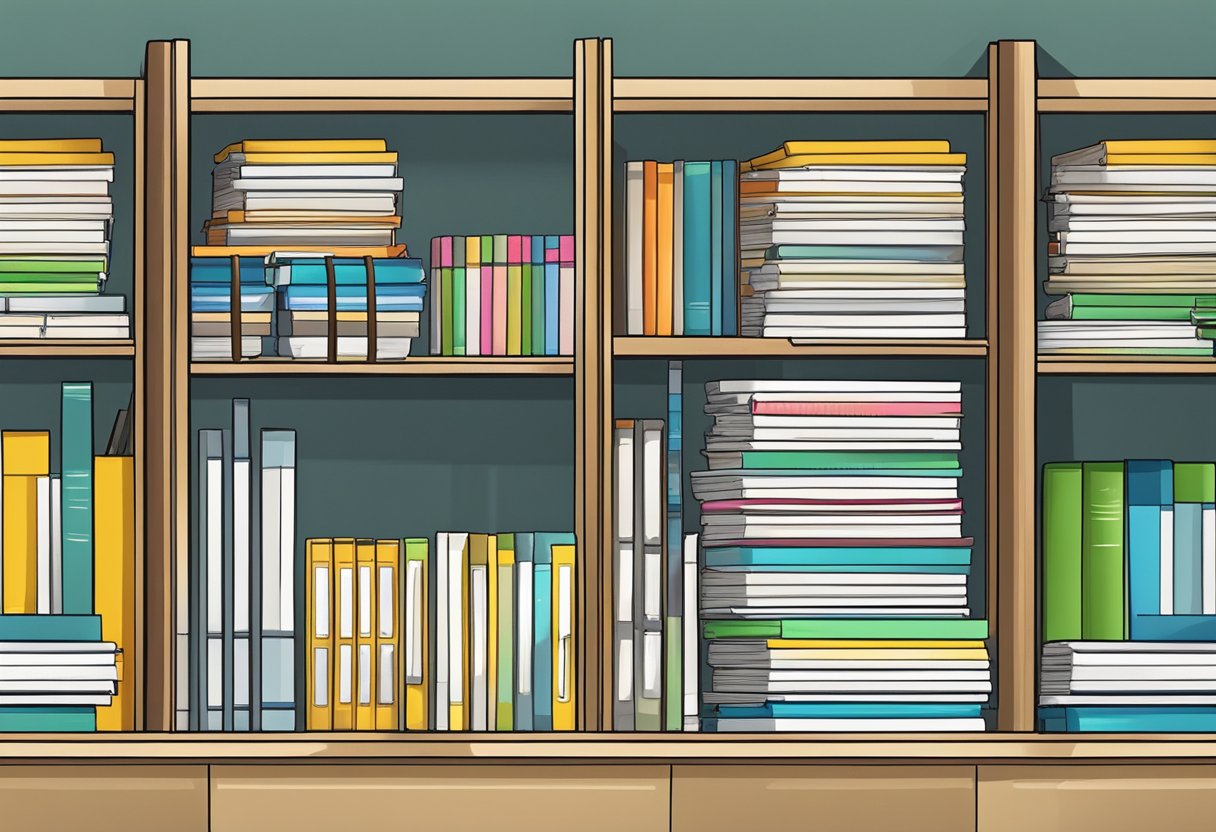
Creating an Effective Paper Organization System doesn’t have to be a daunting task. By following a few simple steps, you can put a system in place that will make it easy to find what you need when you need it. We’ll cover everything from sorting your papers into categories to labeling and storing them in a way that makes sense for you. Plus, we’ll provide you with alternative storage solutions that you may not have considered before.
Key Takeaways:
- You can create an effective paper organization system without a filing cabinet.
- Sorting your papers into categories and labeling them is key to staying organized.
- Alternative storage solutions, such as binders and accordion folders, can be just as effective as a filing cabinet.
Creating an Effective Paper Organization System
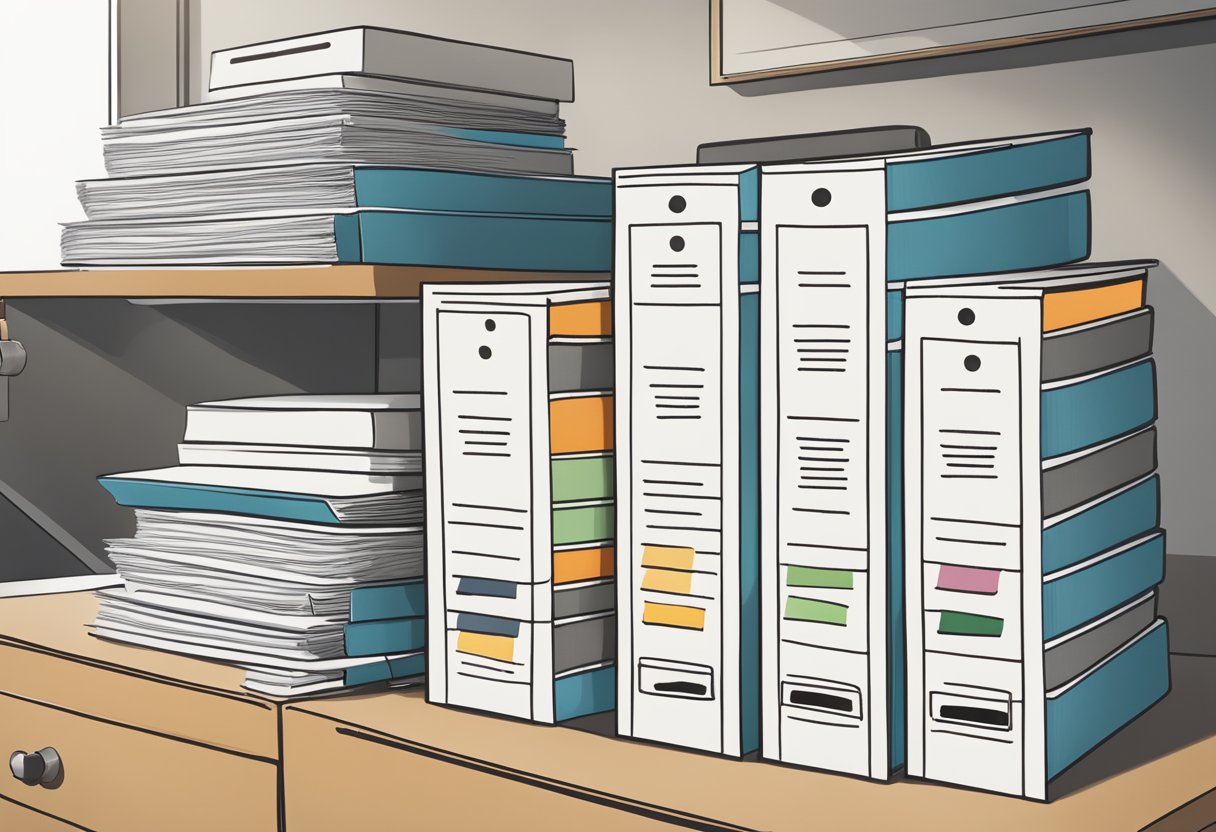
When it comes to organizing your paperwork without a filing cabinet, it’s important to have a system in place that works for you. Here are some tips on how to create an effective paper organization system:
Sorting and Categorizing Paperwork
The first step in organizing your paperwork is to sort and categorize it. Start by gathering all of your important documents, such as receipts, bills, medical records, tax returns, and bank statements. Once you have everything in one place, begin sorting them into categories that make sense to you. For example, you could create categories such as “Bills to Pay,” “Medical Records,” and “Tax Returns.”
Labeling for Easy Identification
Once you have sorted your paperwork into categories, it’s important to label everything for easy identification. Use labels to mark each category and subcategory, as well as individual documents. This will make it easier to find what you need when you need it. You can use pre-made labels or create your own using a label maker or adhesive tape.
In addition to labeling your documents, it’s also important to label your storage containers. Use clear, descriptive labels on boxes, folders, and other storage containers to ensure that you can easily find what you need.
By following these tips and creating an effective paper organization system, you can keep your important documents organized and easily accessible, even without a traditional filing cabinet.
Alternative Storage Solutions
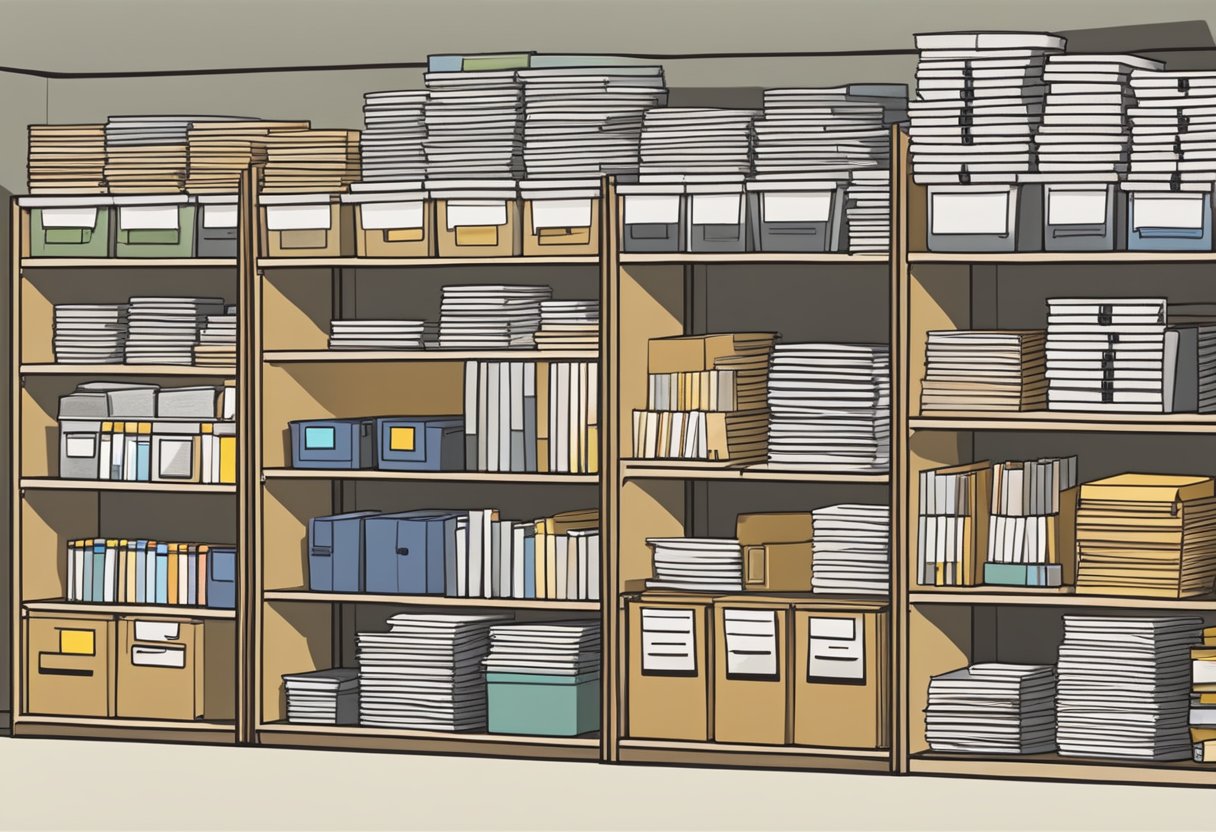
If you are looking for alternative ways to organize your papers without using a filing cabinet, there are several options available. Here are two alternative storage solutions you can consider:
Utilizing Binders and Accordion Files
Binders and accordion files are great options for organizing your documents. You can use dividers and pockets to separate your papers into different categories, such as bills, receipts, and important documents. Page protectors can also be used to protect important documents from damage.
Binders are available in various sizes and colors, and you can choose one that suits your needs and preferences. Accordion files are also available in different sizes and can be easily stored in a closet or on a shelf.
Adopting Digital Organization Tools
Going digital is another great option for organizing your papers. You can use cloud storage services to store your documents online, which allows you to access them from anywhere with an internet connection. External hard drives are also a great option for backing up your documents.
If you choose to go digital, you can use digital organization tools to keep your documents in order. You can create folders and subfolders to categorize your documents, and you can use tags and labels to make them easy to find. You can also use software programs to scan your documents and convert them into digital files.
Overall, there are many alternative storage solutions available for organizing your papers without a filing cabinet. Whether you choose to use binders and accordion files or adopt digital organization tools, the key is to find a system that works for you and stick with it.
Maintaining a Clutter-Free Environment
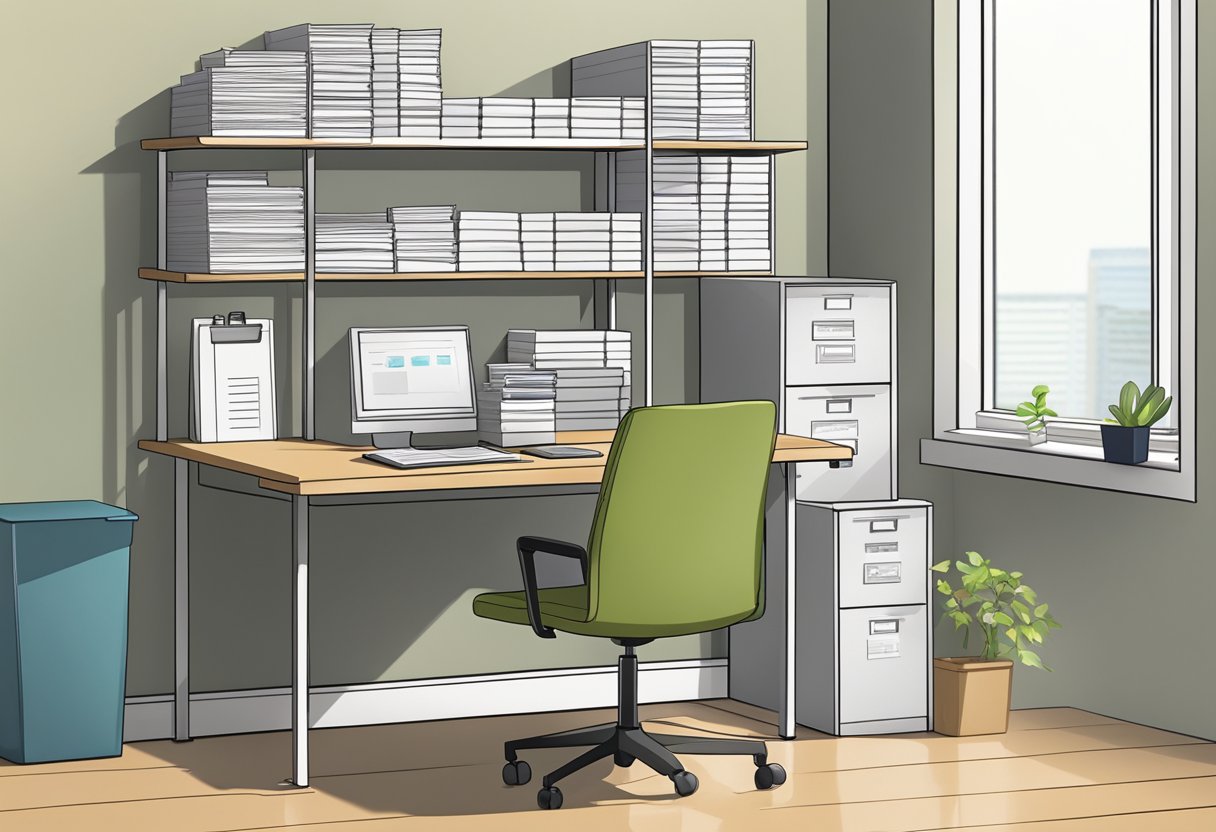
Keeping your workspace free of clutter is essential when you don’t have a filing cabinet to store your papers. A cluttered environment can make it difficult to focus and find what you need when you need it. Here are some tips for maintaining a clutter-free environment:
Regular Review and Purge Routine
To keep your workspace clutter-free, it’s essential to make reviewing and purging a regular routine. Set aside time every week or month to go through your papers and decide what to keep, recycle, or shred.
As you review your papers, ask yourself if they serve a functional or aesthetic purpose. If they don’t serve either of these purposes, it’s time to get rid of them. Papers that require action should be kept in a separate pile or folder to avoid cluttering your workspace.
Recycling and shredding papers that you no longer need can help reduce clutter and keep your workspace organized. Make sure to dispose of sensitive documents properly by shredding them before recycling.
By making regular review and purge routine a habit, you’ll be able to keep your workspace free of clutter and find what you need when you need it.
Frequently Asked Questions
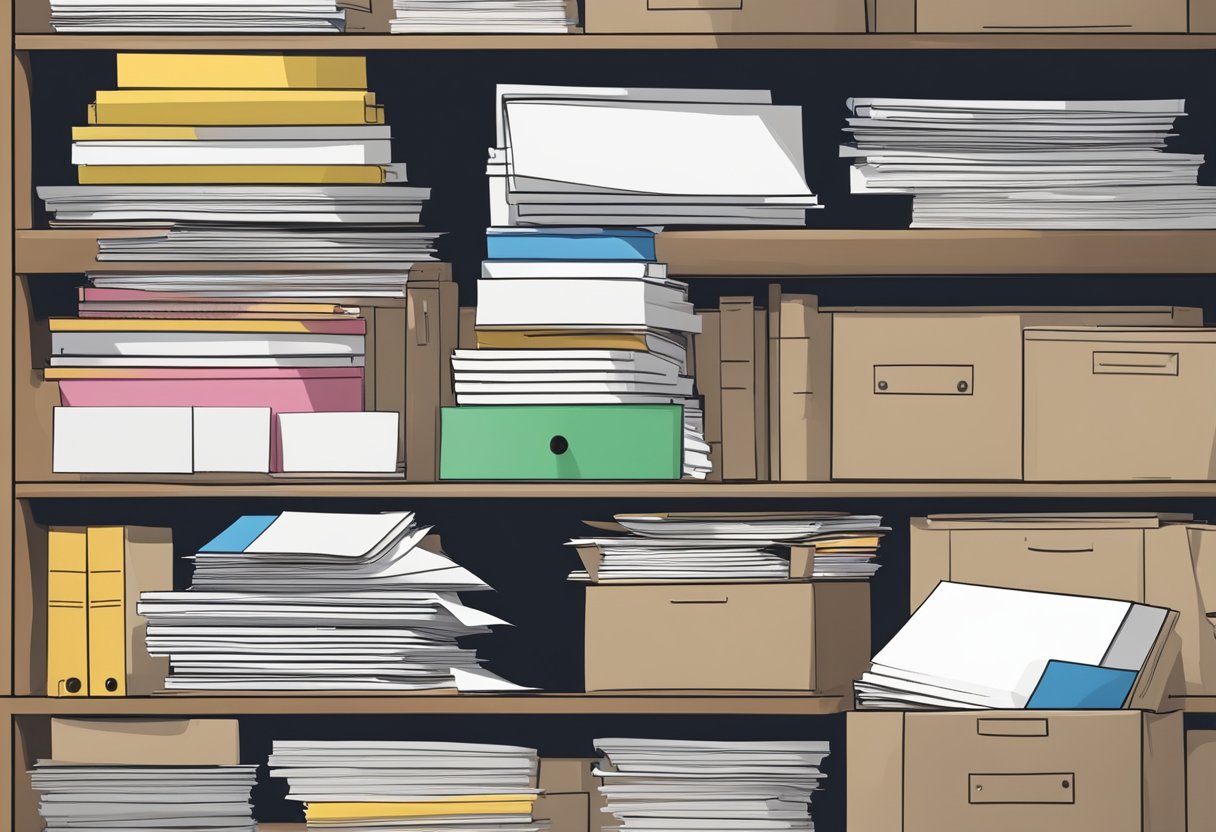
What are effective alternatives to a filing cabinet for organizing papers?
If you don’t have a filing cabinet or don’t want to use one, there are several alternatives you can consider. Some popular options include binders, accordion folders, hanging folders, and portable file boxes. Determine which option works best for you based on the amount of paperwork you have and your personal preferences.
How can I categorize my paperwork efficiently at home without a traditional filing cabinet?
To categorize your paperwork efficiently at home, you can use a variety of methods. One popular method is to sort your paperwork into broad categories such as financial, medical, and legal. From there, you can create subcategories based on your specific needs. Another option is to use color-coded labels or tabs to help you quickly identify different types of paperwork.
What are the best practices for setting up a paper organization system at work?
When setting up a paper organization system at work, it’s important to create a consistent system that everyone can follow. Start by determining the categories and subcategories that make the most sense for your company. Label everything clearly and make sure that all employees understand the system. Regularly review and purge old files to keep the system from becoming cluttered.
Can you recommend a storage solution for paperwork that blends in with home decor?
If you’re looking for a storage solution that blends in with your home decor, consider using decorative boxes or baskets. You can find these in a variety of styles and sizes to fit your needs. Another option is to use a filing cabinet that doubles as a piece of furniture, such as a credenza or console table.
What are the top strategies for maintaining an organized paper filing system?
To maintain an organized paper filing system, it’s important to regularly review and purge old files. Make sure that everything is labeled correctly and that all files are returned to their proper place after use. Consider implementing a system for incoming mail and paperwork to prevent clutter from building up.
How should I manage my paper files to ensure easy access and retrieval?
To ensure easy access and retrieval of your paper files, it’s important to create a consistent labeling system. Use clear, descriptive labels and make sure that all files are returned to their proper place after use. Consider organizing your files alphabetically or by date to make them easier to find.
Amazon and the Amazon logo are trademarks of Amazon.com, Inc, or its affiliates.
Related Posts
03 Dec, 2023Home File Organization Categories: A Comprehensive Guide
03 Dec, 2023Does a Corner Desk Have to Be in a Corner? Exploring the Placement Options
03 Dec, 2023How to Organize a Desk Without Drawers: Tips and Tricks
21 Nov, 2023Ergonomic Height for Desk: How to Set it Up for Optimal Comfort and Health
21 Nov, 2023Are Under Desk Ellipticals Good for Cardio? Expert Answers
